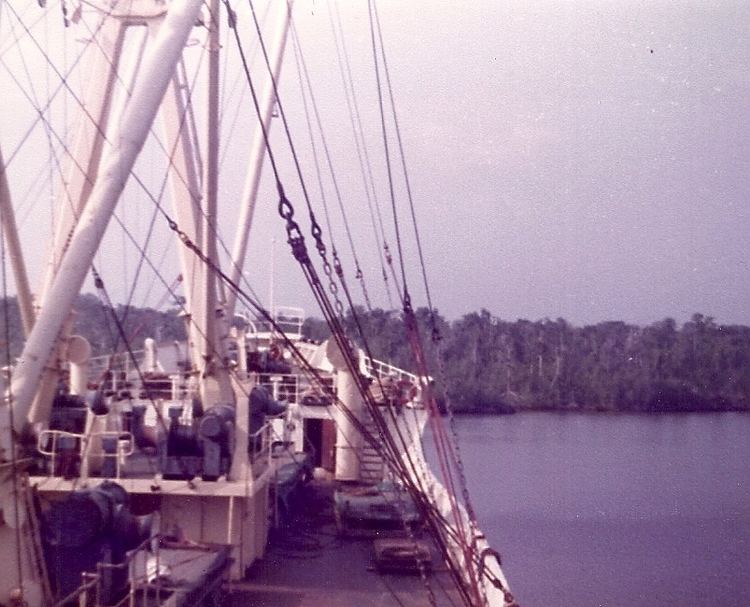Industry Shipping | Defunct 1986 | |
 | ||
Founded 1911, as Southern Whaling and Sealing Company Ltd | ||
The Palm Line was a UK-owned shipping line that was engaged in the West African trade from 1949, primarily servicing the ports along 5,000 miles of coastline from Morocco in the north to Angola in the far south. It ceased trading in 1986.
Contents
Palm Line was a member of both UK/West Africa Lines Joint Service (UKWAL) and Continent/West Africa Conference (COWAC) together with Elder Dempster, Black Star Line, Nigerian National Shipping Line, Guinea Gulf Line and Norwegian Hoegh Line.
Background
In the post-war period of the late 1940s, UAC decided to divest its shipping fleet to become an independent company in its own right. On 16 February 1949, an extraordinary general meeting of shareholders was held to set up the new company. This was done by reviving the dormant articles of association of the old Southern Whaling and Sealing Company, which Lever Bros. had bought in 1919 then sold to Christian Salvesen Ltd in 1941, and changing the name to Palm Line.
The name of the new company had not been decided upon without considerable discussion. At one stage the name Sun Line had been put forward. It was Mr Frank Samuel, later to become the new company's first chairman who thought of the name 'Palm'.
It is notable that all Palm Line ships, with the exception of Kano Palm and Katsina Palm, built before 1970 had to be less than 500 feet (150 m) long in order to navigate the creeks of Nigeria. Draught is another important feature. The coast of West Africa is extremely flat, and the slow-moving rivers and tidal currents have combined to build up long sand bars a mile or two off the coast. To enter most of the rivers, ships must pass over these bars; 27 feet (8.2 m) being the maximum draught to serve all ports. Even so, to enter many rivers, - for example the Escravos River which leads to Sapele - ships cannot carry more than 4,000 tons since the maximum draught to successfully make it over the Escravos Bar is limited to 17 feet (5.2 m), so vessels would often cross over the bar at the entrance to the adjacent Forcados River, then take the connecting creek to the Escravos River.
The early 1980s spelled the beginning of the end for Palm Line. From 1982 until 1986 the dramatic drop in Europe / West Africa trade meant the increasing need to charter the vessels out to third parties. Palm Line was sold to Ocean Fleets in 1986.
Emblem
The palm tree emblem had already been used on a Unilever Ltd house flag designed in 1939.
